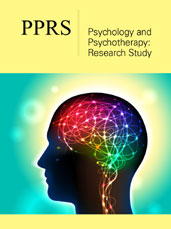Sexting and the Parents’
Role in Sex Education by Dolev Cohen M* in Psychology and Psychotherapy:
Research Studys_ Journal of Psychology and Psychotherapy
Abstract
In
the digital age in which we live, phenomena that take place in the physical
sphere are expressed also in the virtual sphere. This holds regardless of the
age group and is especially true for adolescents, who more than any other age
group are prone to adopt new technologies. Thus, in the virtual sphere, one
finds phenomena such as cyberbullying
[1] and online support groups [2], as well as phenomena related to eating
disorders [3], communicating with strangers [4], communicating with
non-strangers [5], and sexuality [6].
In
the professional literature, sexting is defined as sending sexual messages that
include both text and nude or seminude photographs to others [7,8]. This
phenomenon is not necessarily related to risk behaviors; however, its
implications can include risks, particularly if the content is published online
or used for sextortion or as revenge porn [9,10]. At the same time, sexting
could be the outcome of pressure exerted by one's sexual partner. Previous
studies have demonstrated that sexting is common among adolescents and youths
[9], yet for the most part, it is not reported to significant adults [5]. Given
that parents are often uncomfortable acknowledging the sexuality of their
adolescent children, it is not surprising that the majority of adolescents do not
receive significant guidance or the necessary education on this topic.
In
general, despite the overwhelming exposure to sexuality in the media in general
and on the Internet in particular, sex education at schools is on the decline
[11,12]; this shifts the onus onto the parents, who are left to address the
issue and cope with this role. Indeed, studies have shown that proper
communication between parents and children can result in significant learning
also on the subject of sexuality, given that parents have the ability to guide
their children, provide them with essential information [11] and, in this
manner, protect them from risk behaviors. Nevertheless, even in modern Western
society, women are still expected to behave modestly and protect their bodies;
as a result, boys receive different messages and are educated differently from
girls. Girls receive a clear message that they should be wary of publishing
revealing photographs of
themselves and should take into account the consequences of such behavior, a
message that is rarely conveyed to boys.
Before
we can cope with the implications of the sexting phenomenon, we must recognize
its existence and popularity and provide informative preventive education,
rather than reacting out of moral panic. As in the case of sexual intercourse,
sexting as an expression of sexuality is not inherently wrong. However, also
like in the case of intercourse, those involved in sexting should be mature,
aware of its implications, and be motivated by a willful and an informed
decision, rather than by outside pressures or a desire to please one's partner.
Furthermore, partaking in sexting should be done in a manner that minimizes the
risks, in case the photograph is published (e.g., by sending photos that do not
include any identifiable or facial features). To help their children attain these goals and
act appropriately, parents need to create a meaningful dialogue and explain the
implications and risks to their adolescent children. They should also provide
very clear rules and limitations, as they do on the topic of sexual
intercourse, forbidding their children to engage in sexting, either by exerting
pressure on a partner or by acquiescing to pressure from their partner.
Likewise, they should forbid them to send sexual photos to someone else without
explicit advance consent, as any other form of behavior is considered sexual
harassment
https://crimsonpublishers.com/pprs/fulltext/PPRS.000569.php
For more articles in Journal of Reproductive Health,
Please click on below link: https://crimsonpublishers.com/pprs/



https://medium.com/@sextingfans
ReplyDeleteSexting Fans
ReplyDelete